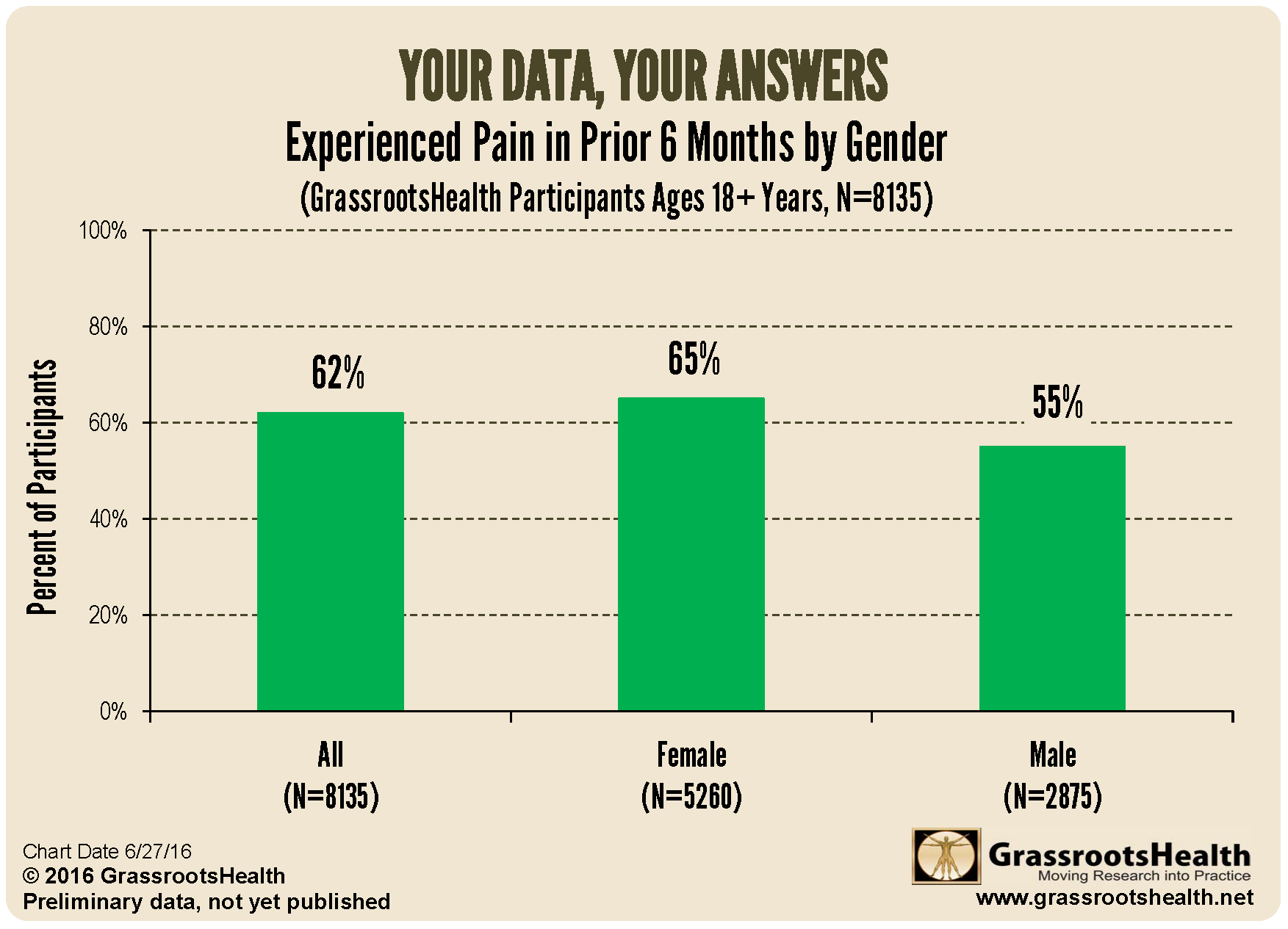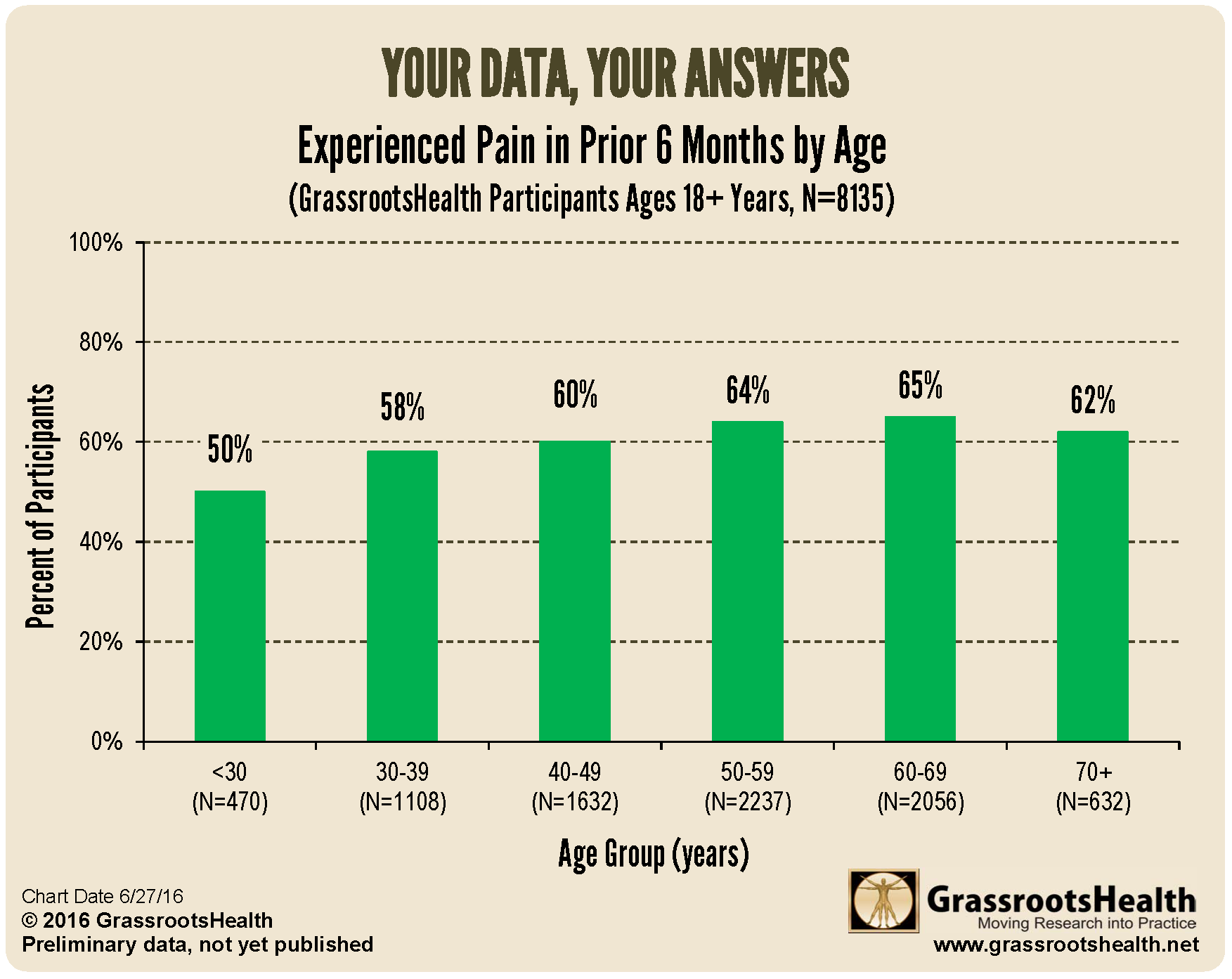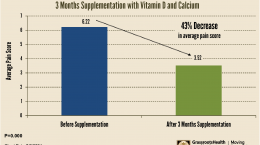Published on May 27, 2019
As many of you know, those participating in the D*action project complete a comprehensive health questionnaire, which is required along with each testing sequence. This data allows us to analyze and report how vitamin D affects general health. Today we are summarizing what we learned from a past analysis (completed in 2016) of that questionnaire data on pain.
With respect to pain the questionnaire asks, “In the last 6 months have you had pain anywhere?” If ‘yes’ they can report up to 3 body parts with pain and an associated pain rating.
Pain rating by vitamin D status
Data from our cohort, 8000 strong at the time of analysis, indicated a 16% lower average pain rating for those with vitamin D levels at or above 75 ng/ml compared to those with levels less than 15 ng/ml.

The average pain rating for this chart was calculated from the highest pain rating reported by each participant (at least 18 years of age) or a pain rating of zero if they had no pain.
Body parts with pain
What were the most common body parts with pain? The back is the overall winner, but you can see the distribution below.

Pain by gender
Women were more likely than men to report having pain.

Pain by age
In general, as age increased, more people experienced pain.

Keep testing and participating!
By continuing to test with D*action every 6 months, and completing the health questionnaire, you are able to keep on top of changes in your vitamin D level, and we can publish data such as this to get more traction for vitamin D in the mainstream medical community.
Could your pain be improved with vitamin D?
Measuring your vitamin D level and calculating a supplementation amount to help reach and maintain a target level could possibly make all the difference in overall health, wellbeing, and how a current disease situation progresses. Test your level now!
Create your custom home blood spot kit by adding any of the following measurements, along with your vitamin D:
- Omega-3 Index (with or without Ratios AA:EPA and Omega-6:Omega-3)
- Magnesium (with or without additional Elements – copper, zinc, selenium, mercury, cadmium, lead)
- hsCRP as a marker of inflammation and HbA1c as a marker of blood sugar health
Having and maintaining healthy vitamin D levels and other nutrient levels can help improve your health, now and for the future. Enroll and test your levels today, learn what steps to take to improve your status of vitamin D (see below) and other nutrients and blood markers, and take action! By enrolling in the GrassrootsHealth projects, you are not only contributing valuable information to everyone, you are also gaining knowledge about how you could improve your own health through measuring and tracking your nutrient status, and educating yourself on how to improve it.
How can I track my pain and my vitamin D levels?
To help you track your pain and nutrient levels, GrassrootsHealth has created an online tracking system called myData-myAnswers. You can also track your supplemental and dietary nutrient intake to see how they impact your nutrient levels and your overall health. Check it out today!






